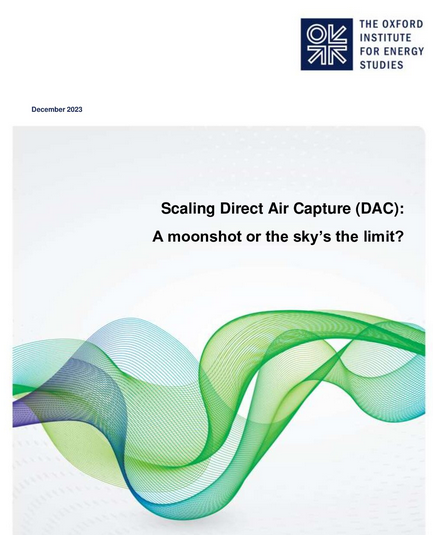
8 gennaio 2024 – Uno studio recentissimo (Dicembre 2023) condotto da Oxford Institute for Energy Studies che affronta i diversi aspetti di attrattività fattibilità ed economicità della cattura della CO2 nell’aria, la variante Direct Air Capture – DAC fra le modalità per la cattura della CO2 note come Carbon Capture and Sequestration – CCS, più comunemente considerata come stadio aggiuntivo di un impianto che produce CO2. Partendo dalla situazione attuale sono forniti elementi per prevedere i futuri sviluppi. Le conclusioni sono:
• Scaling DACS for meaningful impact will be difficult, but possible;
• Technology and materials to reach 1Gt of capture capacity by 2050 exist;
• 1Gt in 2050 would be similar in scale to the existing refining industry, in addition to 2-4% of future power generation, and storage activity equivalent to one third of the current gas extraction industry;
• While CCS deployment has been driven by the proximity of carbon emission sources to storage sites, with DACS it would be driven by proximity to cheap carbon-free energy, carbon storage sites and – depending on the technology deployed – proximity to water sources as well;
• To make a climate-relevant impact, scaling to 5Gt by 2070 would be necessary;
• Exploration for geological storage may emerge as a business activity in the future;
• Current trends and trajectories indicate that the cost of DACS is too high to attract investment at scale at present. So, policy intervention is required and that may take a number of different forms;
• Policy, financing support and prioritisation may become the main challenge; and
• All these challenges have potential solutions, which could and should be examined.
These conclusions support the case that DACS should be taken seriously as an addition to the global toolbox for climate action, just as many overshoot 1.5°C scenarios imply.
